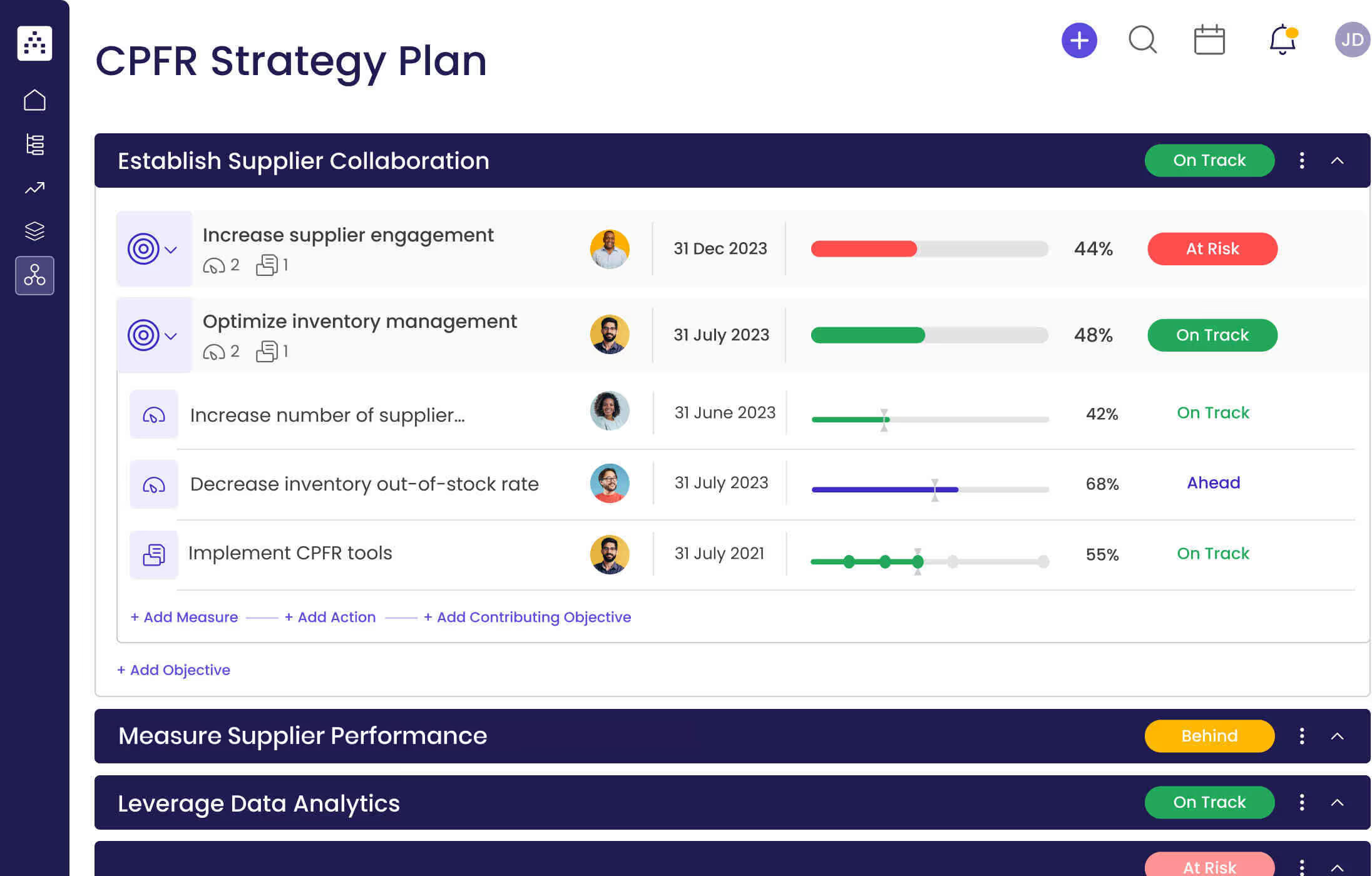What is a CPFR Strategy?
A CPFR strategy is a process used to optimize supplier collaboration and inventory management in supply chains. This strategy is based on the idea of collaborative planning, forecasting, and replenishment (CPFR) which is an approach that involves real-time data sharing and integrated decision-making. The CPFR strategy has been designed to help supply chain professionals increase collaboration with suppliers, optimize inventory management, measure supplier performance, and leverage data analytics. With CPFR, supply chain teams can realize cost savings, improved customer service, and increased operational efficiency.
What's included in this CPFR Strategy template?
- 3 focus areas
- 6 objectives
- 6 projects
- 6 KPIs
Each focus area has its own objectives, projects, and KPIs to ensure that the strategy is comprehensive and effective.
Who is the CPFR Strategy template for?
This CPFR Strategy template is designed for supply chain professionals who are looking to develop a detailed strategy for Collaborative Planning, Forecasting, and Replenishment (CPFR). The template is structured to help teams define clear focus areas, set measurable objectives, implement projects, and measure performance. It also provides a platform to help teams execute their CPFR strategy quickly and effectively.
1. Define clear examples of your focus areas
Focus areas are the broad topics that the CPFR strategy is addressing. Examples of focus areas can include establishing supplier collaboration, measuring supplier performance, and leveraging data analytics. When creating focus areas, it is important to ensure that they are specific and measurable.
2. Think about the objectives that could fall under that focus area
Objectives are the goals that need to be achieved in order to meet the focus area. These should be measurable and time-bound. Examples of some objectives for the focus area of Establish Supplier Collaboration could be: Increase supplier engagement, and Optimize inventory management.
3. Set measurable targets (KPIs) to tackle the objective
KPIs (Key Performance Indicators) are the metrics used to track and measure progress towards the objectives. These should be measurable and time-bound. KPIs should be specific and realistic, and should include an initial value, a target value, and a unit of measurement. For example, under the objective to increase supplier engagement, the KPI could be to increase the number of supplier collaborations with an initial value of 10 and a target value of 20.
4. Implement related projects to achieve the KPIs
Projects (actions) are the initiatives that need to be taken in order to achieve the objectives. These should be detailed and specific, and should include a timeline and resources required. An example of a project related to Establish Supplier Collaboration could be: Implement CPFR tools.
5. Utilize Cascade Strategy Execution Platform to see faster results from your strategy
Cascade Strategy Execution Platform is a strategy execution tool designed to help teams quickly and effectively implement their CPFR strategy. With the platform, teams can track and measure progress in real-time, share insights, and collaborate with stakeholders. The platform also provides access to best-in-class analytics and insights to help teams optimize their CPFR strategy and accelerate results.


